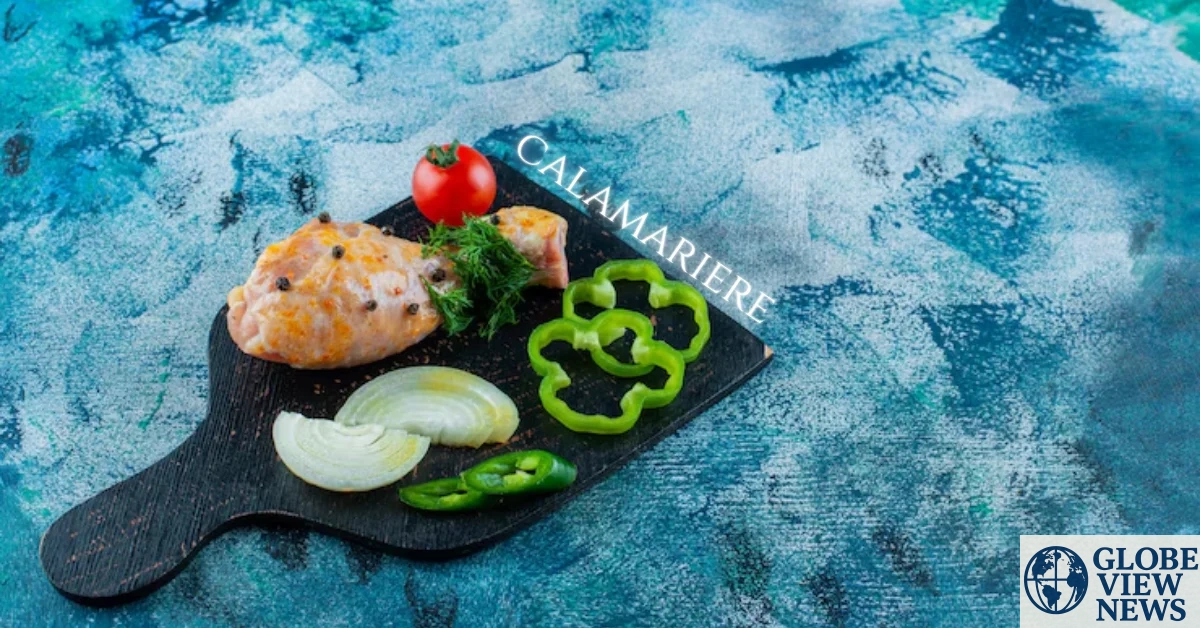When discussing global culinary favorites, few dishes command the universal admiration that calamari does. Yet behind the familiar name lies a lesser-known but richly evocative term—calamariere. This word, at once exotic and precise, opens a window onto centuries of seafood tradition, cultural exchanges across continents, and modern gastronomic innovation. In this in-depth article, we will trace the journey of it from its historical roots to its current role in dining trends, sustainable fishing debates, and culinary artistry.
By the end, it will become clear that calamariere is more than just a dish—it is a symbol of how food connects people, regions, and evolving tastes. Whether you savor it fried, grilled, or in a delicate Mediterranean stew, understanding the story behind it deepens the enjoyment on every plate.
To appreciate it, one must start with its linguistic and cultural ancestry. The term echoes the Italian word calamaro—meaning squid—rooted in the Latin calamarius, related to the word for ink pot or pen case, a nod to the squid’s ink sac. Over centuries, this humble mollusk became prized in coastal kitchens across Southern Europe and Asia.
While “calamari” is now commonplace in English menus worldwide, it retains an old-world charm. It reflects not just the ingredient but the tradition of preparing squid with local herbs, spices, and techniques passed down through generations. In many fishing villages along the Adriatic and the Mediterranean, it denotes both the cook and the signature method they use—an identity marker for culinary artisans whose skills elevate a simple catch to a delicacy.
Historically, it was the pride of coastal communities. Fishermen returning from dawn expeditions brought baskets brimming with squid, destined for bustling markets and seaside taverns. The freshest specimens, often the smallest and most tender, were quickly cleaned and served up as calamariere dishes for local families.
Recipes varied widely depending on region. In Sicily, it might be stuffed with breadcrumbs, anchovies, and fresh herbs before being roasted to perfection. In Greek islands, it would be tenderized and char-grilled over open flames, drizzled with olive oil and lemon. Portuguese kitchens celebrated calamariere in stews spiced with paprika and white wine.
Each preparation reflected the landscape, climate, and local palate, turning a single sea creature into a thousand culinary interpretations.
The journey of it from village secret to global favorite mirrors broader patterns of migration and culinary exchange. As Italian, Greek, and Spanish immigrants settled abroad, they brought beloved seafood recipes with them. In the United States, the term “calamari” became synonymous with crispy fried squid rings, a popular appetizer in coastal cities and Italian-American eateries.
However, the broader tradition of it is much richer than fried rings alone. In Asia, squid dishes—often similar in preparation—were already staples long before the word calamariere appeared. Japanese ika yaki, Korean ojingeo bokkeum, and Filipino adobong pusit all echo the same fundamental respect for squid as a versatile, affordable protein.
This convergence of culinary traditions illustrates how it transcends borders, inviting creative fusion. Today’s chefs blend classic European methods with Asian spices or South American ceviche techniques, continually reimagining what it can be.
Mastering it requires skill, patience, and an understanding of squid’s delicate nature. One mistake—overcooking—can turn tender flesh into rubber. Traditional calamariere cooks often rely on time-honored tricks: marinating in acidic citrus to tenderize, scoring the body for even cooking, or flash-frying at high temperatures to lock in moisture.
Presentation also matters. In fine dining, it might be served as artfully plated medallions with truffle foam or squid ink risotto. In street food stalls along coastal Europe, it arrives in paper cones, fresh from the fryer, sprinkled with sea salt and handed over with a wedge of lemon.
This dual identity—simple snack or sophisticated delicacy—explains why it remains a fixture on menus from humble cafes to Michelin-starred restaurants.
In many seaside towns, it is more than just sustenance; it is a symbol woven into local customs and festivals. Annual squid festivals draw crowds eager to celebrate the fishing heritage that sustains communities. Boats adorned with lights head out at night when squid are most active, a tradition that doubles as both ritual and tourism attraction.
During such festivities, entire streets transform into open-air kitchens. Vendors compete to serve the most delicious calamariere dish, judged by crowds and culinary experts alike. Songs, dances, and storytelling often accompany the feasting, underscoring the deep bond between food and community identity.
The growing appetite for it raises pressing questions about sustainability. Squid populations are more resilient than many other marine species, but climate change, overfishing, and industrial trawling still pose threats.
Responsible fishermen and chefs are increasingly advocating for traceable sourcing and seasonal catches to protect squid stocks. Innovative aquaculture efforts explore the possibility of squid farming—though challenges remain due to the species’ short life cycle and complex breeding behavior.
Sustainability certifications and consumer awareness play crucial roles in ensuring that future generations can continue to enjoy authentic calamariere without compromising ocean health.
Today, it has become a favorite playground for contemporary chefs. Molecular gastronomy experiments with deconstructing traditional squid recipes. Vegan chefs, acknowledging the popularity of it, create plant-based imitations using mushrooms or konjac root, replicating the texture and flavor profiles to appeal to conscious eaters.
Food festivals worldwide showcase inventive calamariere spins: squid tacos with Korean gochujang, squid pasta with Thai basil, or even squid ink ice cream for the adventurous palate. This creative freedom demonstrates how an ancient tradition remains vibrant and endlessly adaptable.
Ask anyone raised near the sea, and chances are they have a calamariere memory: a grandparent teaching them how to clean squid on a wooden pier; a festive family gathering where plates of stuffed squid were shared among cousins and neighbors; a romantic dinner overlooking the surf, where grilled calamari symbolized summer’s fleeting magic.
These stories reveal a universal truth: it is not just food but a vessel of memories, a taste that brings people together across generations and cultures.
For home cooks eager to master it, the key is respect for the ingredient. Buy fresh squid when possible, clean it thoroughly, and experiment with marinades and quick cooking techniques. Simple recipes often yield the best results—olive oil, garlic, a splash of lemon, and fresh herbs let the natural sweetness shine.
Cookbooks, culinary blogs, and online cooking classes now bring regional calamariere secrets to kitchens worldwide. With a bit of practice, anyone can recreate this dish that bridges simplicity and sophistication.
As global tastes evolve, it will continue to adapt. Sustainable sourcing, plant-based alternatives, and culinary innovation will shape its next chapters. Yet at its core, it will always symbolize a timeless bond between humanity and the sea—a reminder that some pleasures, like sharing good food, never go out of style.
From ancient Mediterranean ports to bustling modern food festivals, it endures as a testament to culinary tradition, cultural identity, and the universal love of good, honest cooking. Its story reminds us that the best dishes carry with them not just flavors but history, community, and the simple joy of gathering around a table.
So the next time you savor a plate of squid—whether fried, stuffed, or grilled—pause for a moment to appreciate the heritage behind that bite. In doing so, you honor the spirit of calamariere, a dish whose journey continues to unfold, one delicious story at a time.

